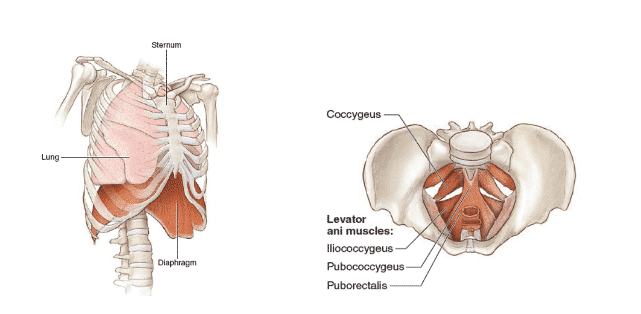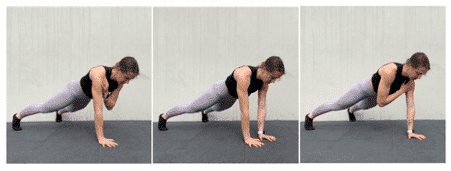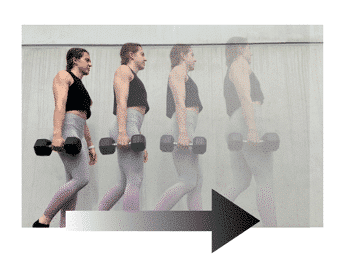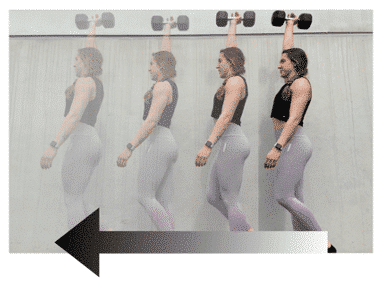11 de March de 2021
3 types of CORE training for athletes to improve strength
I’m sure that at some time your training partners and you have spoken or heard about core. It is on everyone’s minds, you have probably even even seen magazines that talk about it in their beauty section.
But, are we really aware of what it is and of the potential benefits it can bring to our sports performance?
Fashion come and go, but the core has always existed. The only difference is that we have given a name with better branding to the set of muscles that, in a simplified way, surround our abdomen. A more official definition would be that of the American College of Sports Medicine (ACSM) in their article “CORE[1] Training” in which they define the core as the entire torso area, encompassing the area between the ball joints of the shoulders and hips (Willardson, 2014). We also have authors like Contreras (2014) who divide them into internal muscles and other more external ones, but we are going to use Boyle (2016) as a reference since his compilation is the most complete, and for a better understanding we are going to imagine the core as a closed cylinder (Figure 1.1)

Figure 1.1 Closed cylinder schematic of the CORE,
a. representation of the location of the muscles surrounding the trunk in orange.
b. representation of the location of the diaphragm (blue) and pelvic floor (pink).
Muscles that make up the “cylinder contour”
(Figure 1.1.a. and 1.2)

| ABDOMINAL MUSCLES | .BACK MUSCLES | HIP MUSCLES |
|
|
|

Images 1.2. Core muscles in the front, side and back of the body (From Bodyweight Strength Training Anatomy).
Muscles that make up the “cylinder covers”
(Figure 1.1.b. and 1.2)
- Diaphragm (respiratory muscle);
- Pelvic floor muscle

Figure 1.3 Core muscles at the back and front of the body (Taken from Bodyweight Strength Training Anatomy)
As you have already read, the core is much more than the rectus abdominis. Even its meaning translated into Spanish would be “nucleus”, since it is the pillar of our body and therefore provides stability to our body segments, from shoulder to knee stability . In summary, it is in charge of transmitting the forces between the upper and lower limbs of the body. When there is a rapid movement in the extremities, the core needs to be strong and stable so that the movement is as efficient and powerful as possible.
This last concept is key since it is one of the causes that this muscle group has become so “trendy” and popular.
Is it really that important?
This stabilizing capacity has several functions, among them is to prevent injuries, although it’s not the determining factor, nor the only one when it comes to avoiding a knee injury for example (Mutlu Cuğ, 2012) (McGill, 2010). There are many others, but their correct operation can help us reduce the chances of this happening.
And one of the most important and why we are discussing core in this article is its transfer to strength sports. It is proven that its activation during the performance of vertical initial component [1] exercises, such as the deadlift and the squat (Rogan, 2014), is high and therefore its specific work to improve sports performance is interesting.
How can it help us improve our strength?
The basic movements of the torso that comprise the core musculature are flexion and extension, inclination and rotation (Charles & Todd, 2017) (Image 2). In this last study mentioned above, it is also stated that the most effective way we have to train is with the “anti-movements”, where the core is isolated avoiding the primary action of the torso[2] , and in this way, the core will absorb the impacts and instabilities of the segments and stabilize everything. For example, it was found that anti-extension exercises such as the “stability ball rollout” were the most effective exercises to activate rectus abdominis, transverse abdomen and internal and external obliques (Escamilla , et al, 2010).
Therefore, we are going to look for exercises that avoid the flexions / extensions of the torso, the lateral inclinations and finally the rotations.
When we talk about core training, we cannot forget to mention Stuart McGill, one of the world’s leading experts on spinal biomechanics and his “Big 3” (image 3) which consist of three exercises that the author considers fundamental as shown in his latest revision from 2010.

Imagen 3. “Big 3” de McGill (2010)
Taking into account all the above in addition to the knowledge acquired through professional and personal experience from coaches and athletes, we are going to propose three different examples of training to improve core strength and stability.
The pillars on which we will rely will be anti-movements, work with instability and the “Big 3 of McGill”. On top of that, we will divide the workouts according to the necessary material, to be completed in a gym, or with little or no material. If you want to learn more about strength training you should check out theses 5 Pro Tips to level up to your goals.
It is important to emphasize that the following exercises, number of repetitions and series are a general and approximate indication and for their greater efficiency we should study each individual case and adjust the load and training volume to each athlete.
TRAINING 1 – Core training without material
|
Reps: 8/e | sets: 3 |
| Front Plank + Rocking Plank
|
time + reps: 15”+8 | sets: 3 |
| Side Plank
|
Time: 25”/e | sets: 3 |
| Dead Bug Against Wall
|
Reps: 8/e | sets: 3 |
| Shoulder Tap Plank
|
Reps: 8/e | sets: 3 |
WORKOUT 2 – Dumbbell core workout or “KettleBell”
Curl-Up |
time: 10”/e | sets: 4 |
| Suit Case Carry DB/KB
|
20 m | sets: 4 |
| PLANK DB/KB Pull Through
|
Reps: 8/e | sets: 4 |
| OverHead Carry Single Arm DB/KB
|
20 m | sets4 |
TRAINING 3 – Training with different materials
| Kneel to Standing Over Head DB/KB Hold (AIt)
|
Reps: 8/e | sets 4 |
| Pallof Dead Bug (AE)
|
Preps: 6/e | sets4 |
| Single Leg Romanian DeadLift (AR)
|
Reps: 10/e | sets 4 |
| Ball Rollouts (AE)
|
Reps: 7 | sets 4 |
To conclude, as Dr. Aaron Horschig would say:
Need a “revolutionary” core stability exercise? Do a tempo “ descent + 10” pause front squat & don’t break form. Simple.
Bibliography
- Boyle, M. (2016). New Functional Training for Sports Second Edition. Human Kinetics.
- Charles , F., & Todd , P. (Abril de 2017). Wolters Kluwer Health, Inc. Obtenido de Core Training: Separating Fact From Fiction: https://journals.lww.com/acsm-healthfitness/fullte…
- Contreras, B. (2014). Bodyweight Strength Training Aanatomy. Human Kinetics.
- Escamilla RF, Lewis C, Bell D, Bramblet G, Daffron J, Lambert S, Pecson A, Imamura R, Paulos L, Andrews JR. Core muscle activation during Swiss ball and traditional abdominal exercises. J Orthop Sports Phys Ther. 2010 May;40(5):265-76. doi: 10.2519/jospt.2010.3073. PMID: 20436242.
- McGill, S. (2010). Core training: Evidence translating to better performance and injury prevention. Strength & Conditioning Journal, 32(3), 33-46.
- Mutlu Cuğ, E. A., Özdemir, R. A., Korkusuz, F., & Behm, D. G. (2012). The effect of instability training on knee joint proprioception and core strength. Journal of sports science & medicine, 11(3), 468.
- Rogan, S., Riesen, J., & Taeymans, J. (2014). Core muscle chains activation during core exercises determined by EMG-a systematic review. Praxis, 103(21), 1263-1270.
- Willardson, J. (2014). Developing the core NSCA. Human Kinetics.













